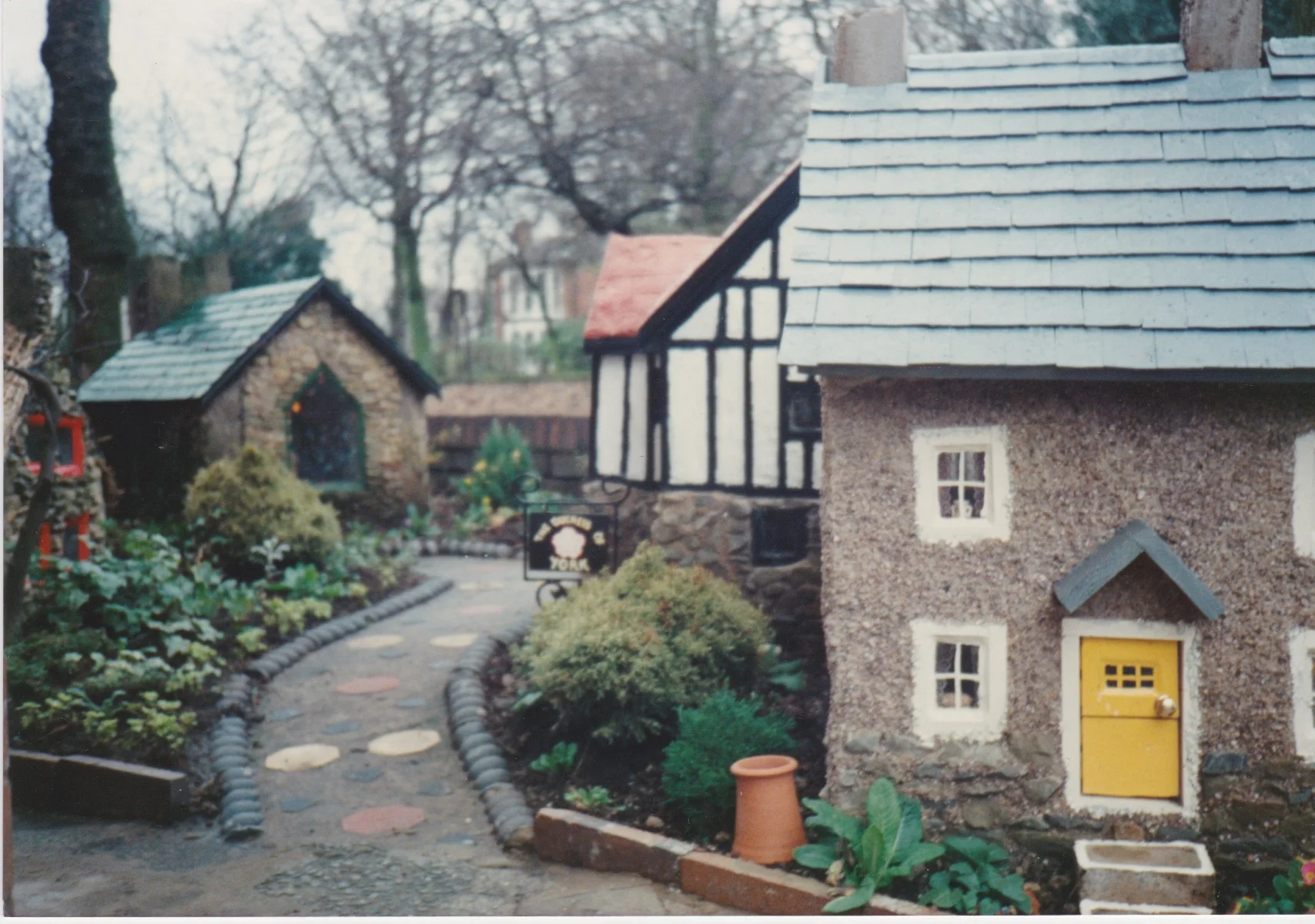TOY TOWNS
WRITTEN BY Hayley Flynn
READING TIME: 4 minutes
A tiny abandoned village in someone’s front garden
Levenshulme and its immediate borders with neighbouring suburbs such as Burnage and Longsight is rich with treasures. Slade Hall; Cringle Park; The Street With No Name; the church that looks like Liverpool Cathedral; the former Martin's Bank; the house from Hell Is a City; the strangely alluring and colourful yard where doors go to die; the abundance of cats; my first sightings of jay birds; and the antiques village and former town hall. And of course there’s the wonderland that is the miniature houses of Levenshulme. Or Burnage. Let's not quibble over geography.
The houses were started in 1978 and complete ten years later in 1988. They run along a small pathway from one side of the garden to the driveway at the front of the house and in their prime they were lit up at night time by a switch inside the main house. The garden was open to the public at all times, people invited in by a sign that read "You May Walk Around if You Wish", and played a huge part in the childhood of the local children. One house, a tudor style detached is engraved in the names of Joyce and Sylvia, dated 1988 and spilt into two businesses - one a toy shop and the second a post office and general groceries. It's here that you can see a light dangling, loose from it's holding in the ceiling of the structure, a purple fairy light - a relic of the past when the tiny street was alive.
As well as the post office there's a church building and a row of terraced houses named York Terrace - in these houses, where the rooftops have long since crumbled to nothingness, ivy grows inside each room poised like a frozen tidal wave sweeping through the building. In some rooms, when the breeze blows, a sliver of lace curtain in a window flutters in the frame, and some windows still hold onto shattered fragments of glass.
The houses have been quick to demise since the owners left, the current owners are ambivalent about them and had tried to remove one in the driveway but the foundations are so well rooted they thankfully gave up. A few years ago when I first visited the houses York Terrace had a roof, albeit a rapidly deteriorating one, now that has vanished without trace.
So where did the houses come from? I tried a few years ago to trace the owner by asking around the neighbourhood but didn't come up with much except what transpired to be a slightly incorrect name and some electoral records that didn't help much. It felt like I'd never find the owners and I put the idea to rest for a while. When I came to trace them this year I found them within a few hours. The power of the internet.
So I came to find Alan Teague. Once the head gardener at Fletcher Moss Park and now living in Ilfracombe, Alan told me he built the village in the garden of his house and how he'd always had an interest in architecture and miniature models of any sort.
"I'd been round a couple of model villages and decided to try and make some myself. My dad even wired them up so that there was a light switch in the house to turn them all on so they lit up."
I asked Alan about the names on the houses (Joyce and Sylvia) and he told me they were the names of his mother and his partner Nigel's mother, he also mentioned the naming of another building
"There was a pub which was black and white with a red roof called 'The Duchess of York' which I named after the children's hospital that was closed across the road the same year I built the village."
Ten years after laying his foundation stone he'd completed his project, a handmade miniature village in his own garden. Alan and Nigel left the house in 1993 and hadn't returned until 2013 when they were passing through.
"I was disappointed to see them in such a bad state and even knocked on the door to say hello to the new owner. He was a very nice gentleman and even said that he would be happy if we wanted to take them apart and ship them to our new home in Devon. This is something I was very keen to do but unfortunately the cost and traveling would have been too high."
The magic might be diluted a little now the village is abandoned and in a state of ill repair but it's still very much there. Curious as to how it looked during the villages heyday I was kindly given some photos and was a little swept away by the delightful details - miniature cakes in the windows, flowerbeds, and tiny bicycles leaning against a shop window.
Alan and his family created a wonderland that made a huge impression on many children of Manchester over the decades, and he did so for no other reason than the joy of it all.
UPDATE: In 2018 the houses were demolished.
This article was republished in part, without permission, by the Daily Mail.


